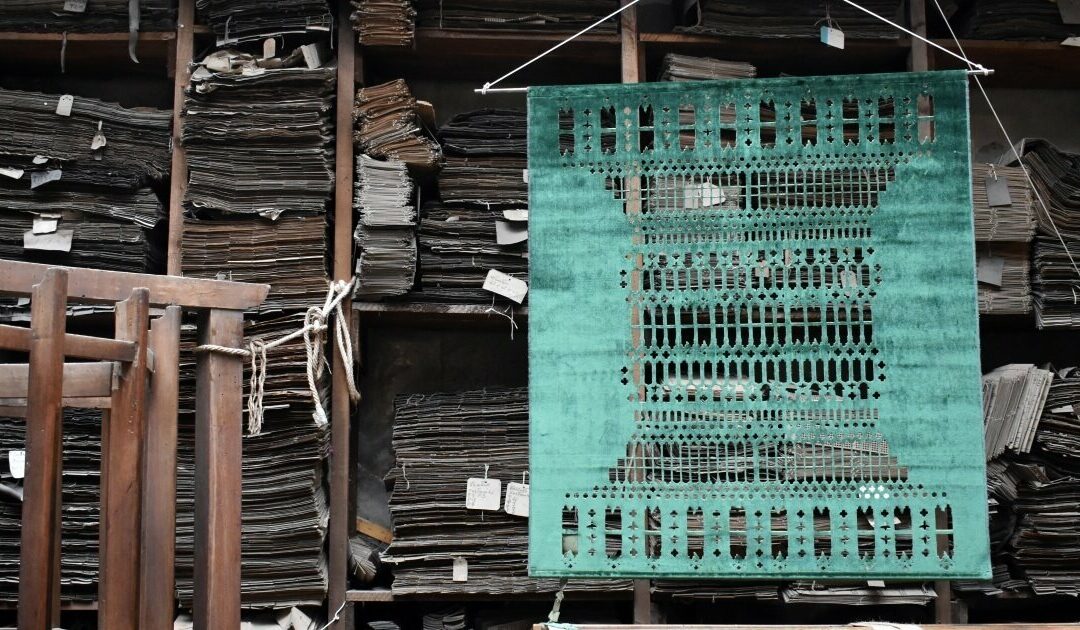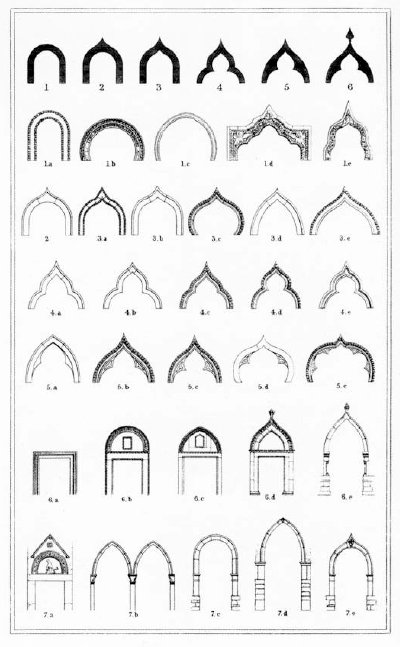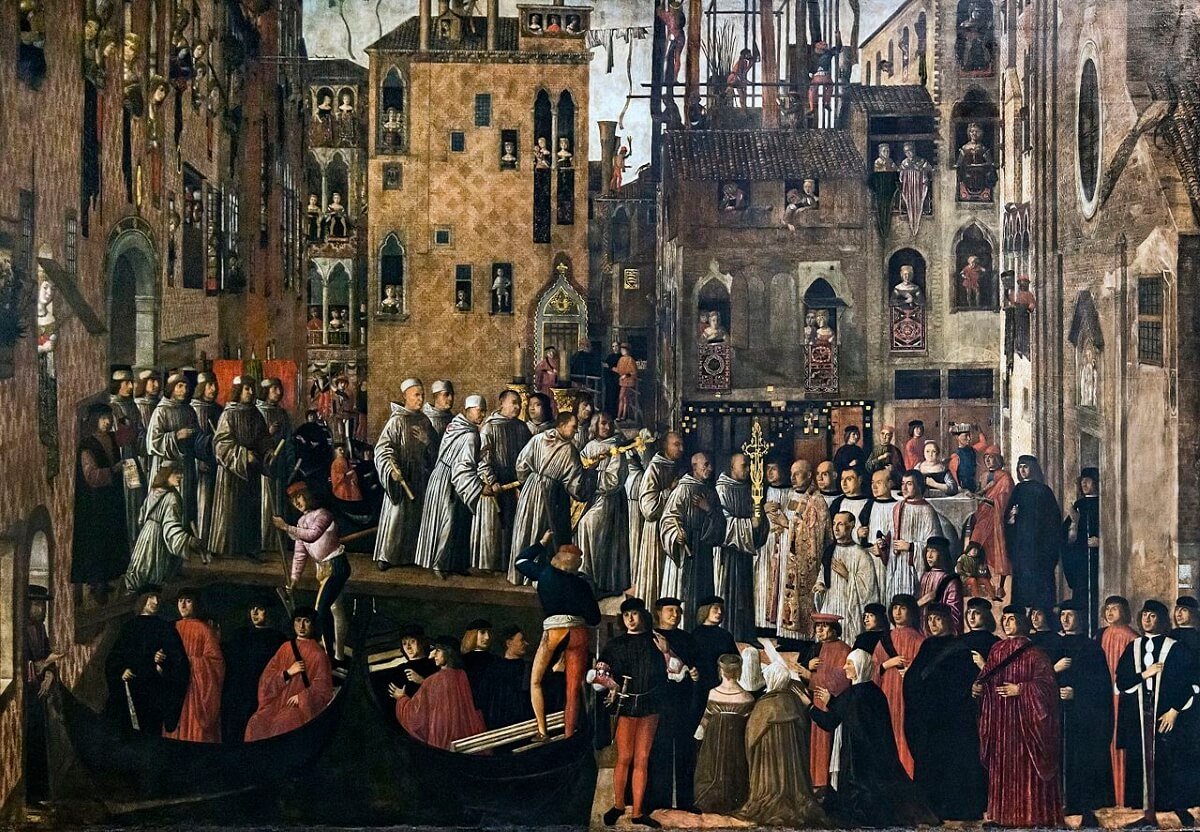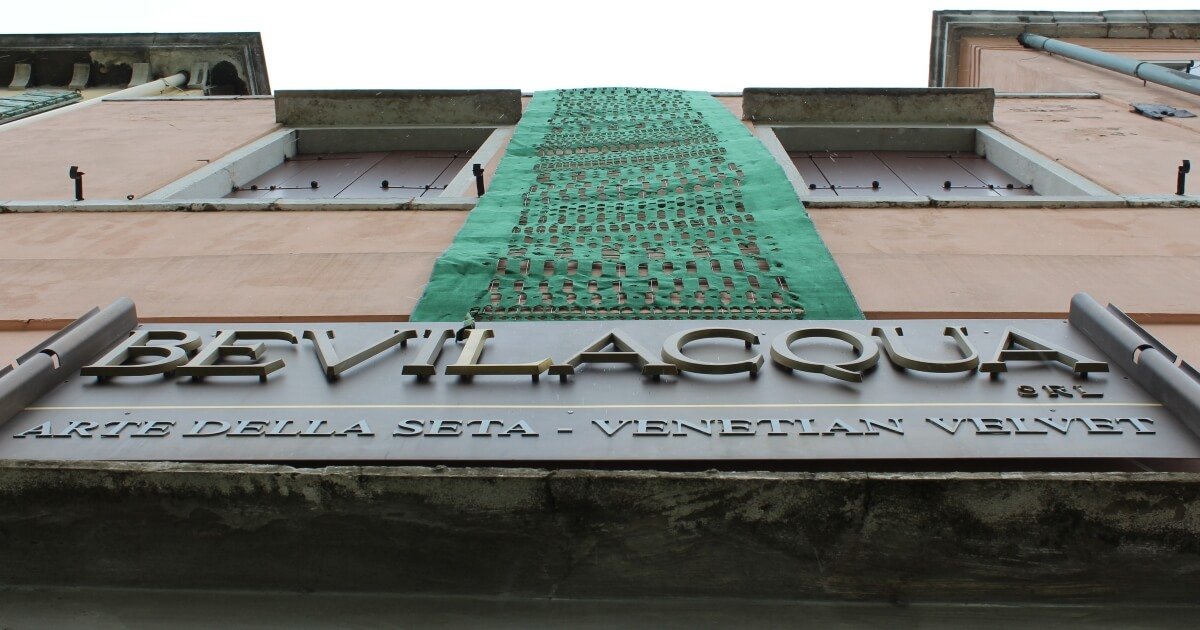What future awaits Venetian art and craftsmanship? This is the question the visual artist Elio Ticca asked himself after entering the Arte Laguna Prize contest. His answer was the work that won one of this year’s prizes: a project merging history, innovation and Venice’s artistic heritage. You can see it hanging on our façade overlooking the Grand Canal, and here’s how it was born and which is its meaning.
Venetian Windows: the work of art that celebrates Venetian Gothic style (and much more)
Elio Ticca (Nuoro, 1988) was awarded one of the “Business for art” prizes of the 13th Arte Laguna Prize, for a work containing one of our velvets. His creation combines a modern technology, laser cutting, and one of the oldest kinds of furnishing fabrics produced in Venice. To be more specific, the installation employs a Paolo Veronese green Unito velvet, neatly contrasting with the building’s façade and thus hinting at the expressive use of colour which was typical of Venice’s Renaissance paintings.
History and modernity thus meet in this work. But the artist added another typically Venetian element to it: windows. There’s a detailed account of these architectural elements in the book The Stones of Venice (1853) by the art historian John Ruskin. He analyzed each Venetian architecture down to the smallest detail, praising their beauty and wistfully contemplating their fragility.
Using the addresses Ruskin himself provided, Elio Ticca could therefore locate all the different sorts of windows in Venice and to copy them on a fabric. He added some modern windows, though, to the ones listed by the art historian, which he found on the Giudecca island.
But what does this work mean? Why did the artist pick windows to represent the history of our company and of the city?
A work to show the past and future of Venetian art and craftsmanship
As Elio Ticca himself explained, the project aims at uniting tradition and innovation, history and modern art: Tessitura Bevilacqua carries on the century-old tradition of velvet production. But the survival of this tradition is inextricably interwoven with the ability to innovate colours, patterns and uses of these fabrics, thus meeting ever-changing tastes and needs.
And what about its setting? Why has the artist placed such a work on the façade of our building that overlooks the Grand Canal?
There are two reasons for it, a historical one and a figurative one:
- some paintings by 15th-century Venetian artists, such as Vittore Carpaccio and Giovanni Mansueti, show luxury fabrics hanging from the palaces’ windows;
- hanging a textile outside a building means letting all weathering factors affect it. It will therefore transform with each passing day, just like Venice, which must find a way to preserve its artistic heritage.
The main installation, placed outdoors and therefore constantly changing, is accompanied by a second, smaller, one inside the Tessitura. The latter work, too, shows the city’s windows, 801 in fact: this is the number of citizens who left Venice between 2018 and 2019. Since it’s not affected by wind, rain and sun, this smaller work will serve as a token of remembrance for both this collaboration and the bridge between past and future on which Venice stands.
Giovanni Mansueti, “Miracle of the Relic of the Holy Cross in Campo San Lio” (1494 ca.)
Elio Ticca’s versatile site-specific installation highlights the Venetian tradition of velvet making thanks to a strong connection between materials and new technologies, thus carrying on the ancient weaving tradition of the Republic of Venice. The work Venetian Windows will be hanging on Bevilacqua’s façade overlooking the Grand Canal from May 8th to November 22nd.





